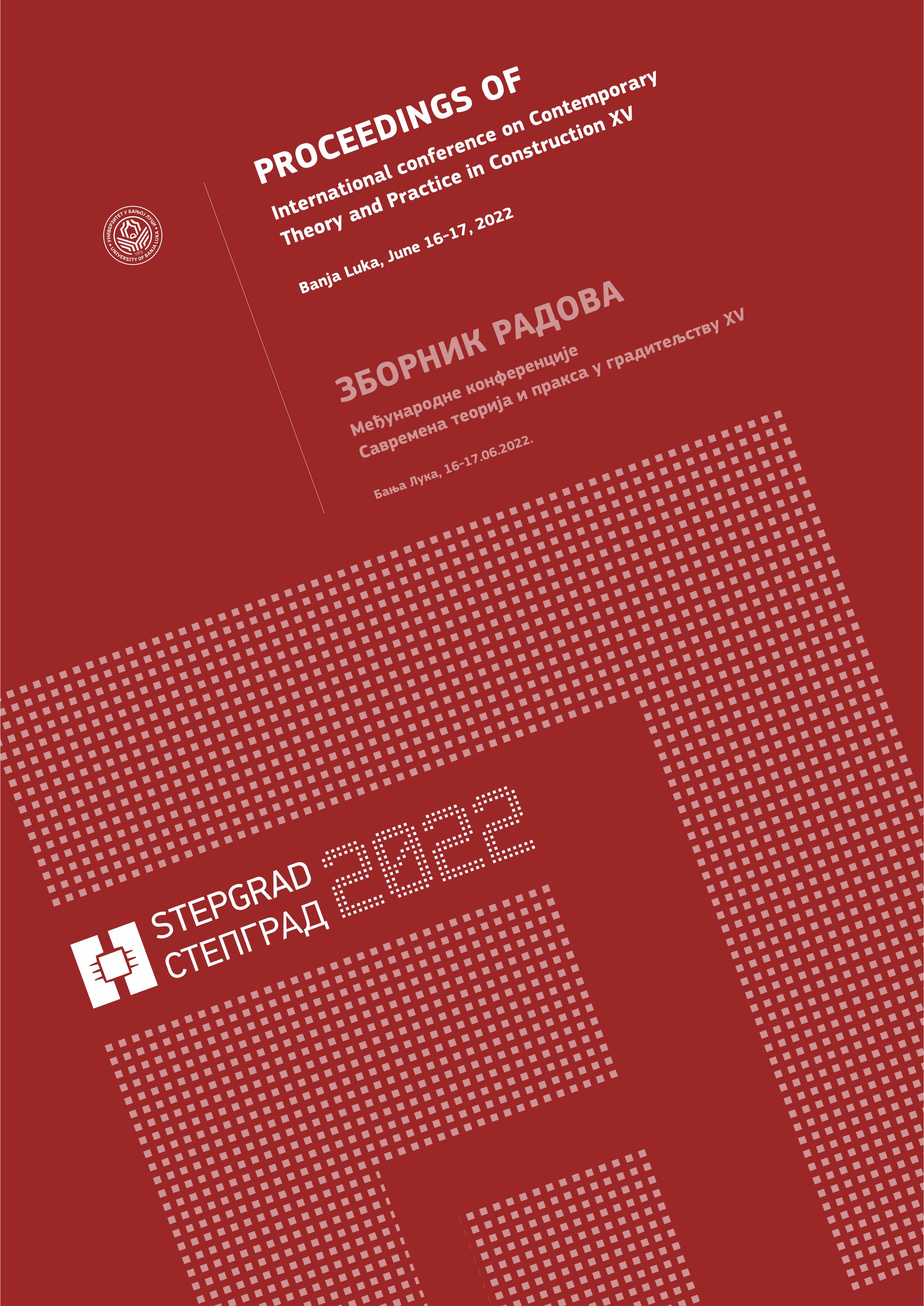ANALYSIS AND EVALUATION OF THE THERMOPHYSICAL PROPERTIES OF VENTILATED FAÇADE TYPOLOGIES
DOI:
https://doi.org/10.7251/STP2215153CAbstract
The energy efficiency of the construction sector is denoted by the European energy and environmental policies, by international standards and national legislation. Ventilated facades can contribute towards more efficient buildings, hence this paper focuses on the evaluation of ventilated façade construction typologies and the impact of thermal radiance exposure. The selected scenarios were evaluated in terms of thermophysical analysis and laboratory measurements, and based on the results useful conclusions can be derived. Nevertheless, there is need of further investigation towards alternative configurations of the facades, such as implementing alternative ventilation configurations and patterns as well as more innovative and technical efficient construction materials.
References
United Nations Environment Programme, “2021 Global Status Report for Buildings and Construction: Towards a Zero-emission, Efficient and Resilient Buildings and Construction Sector,” Nairobi, 2021. [Online]. Available: www.globalabc.org.
E. Giama, E. Kyriaki, P. Fokaides, and A. M. Papadopoulos, “Energy policy towards nZEB: The Hellenic and Cypriot case,” Energy Sources, Part A Recover. Util. Environ. Eff., 2021, doi: 10.1080/15567036.2021.1892885.
A. M. Papadopoulos, “State of the art in thermal insulation materials and aims for future developments,” Energy Build., vol. 37, no. 1, pp. 77–86, Jan. 2005, doi: 10.1016/j.enbuild.2004.05.006.
A. Kumar and B. M. Suman, “Experimental evaluation of insulation materials for walls and roofs and their impact on indoor thermal comfort under composite climate,” Build. Environ., vol. 59, pp. 635–643, Jan. 2013, doi: 10.1016/j.buildenv.2012.09.023.
L. F. Cabeza, A. Castell, M. Medrano, I. Martorell, G. Pérez, and I. Fernández, “Experimental study on the performance of insulation materials in Mediterranean construction,” Energy Build., vol. 42, no. 5, pp. 630–636, May 2010, doi: 10.1016/j.enbuild.2009.10.033.
H. Huang et al., “Optimum insulation thicknesses and energy conservation of building thermal insulation materials in Chinese zone of humid subtropical climate,” Sustain. Cities Soc., vol. 52, Jan. 2020, doi: 10.1016/j.scs.2019.101840.
K. Leonidaki, E. Kyriaki, C. A. Konstantinidou, E. Giama, and A. M. Papadopoulos, “Thermal performance of office building envelopes: the role of window-to-wall ratio and thermal mass in Mediterranean and Oceanic climates,” 2014. [Online]. Available: https://www.researchgate.net/publication/275955363.
M. Peel, B. Finlayson, and T. Mcmahon, “Updated World Map of the Koppen-Geiger Climate Classification,” Hydrol. Earth Syst. Sci. Discuss., vol. 4, Oct. 2007, doi: 10.5194/hess-11-1633-2007.
Fergas, “Crossflow/Tangential Blowers,” 2022. https://www.fergas.com/en/products/ crossflow-tangential-blowers (accessed Mar. 14, 2022).
ISO, ISO 6946: Building components and building elements-Thermal resistance and thermal transmittance-Calculation methods. 2017.
Rubitherm GmbH, “Inorganic PCM SP-line,” 2022. https://www.rubitherm.eu/en/ index.php/productcategory/anorganische-pcm-sp (accessed Mar. 13, 2022).
Onset, “HOBO 4-Channel Analog Data Logger UX120-006M | Onset Data Loggers,” 2022. https://www.onsetcomp.com/products/data-loggers/ux120-006m/ (accessed Mar. 04, 2022).

